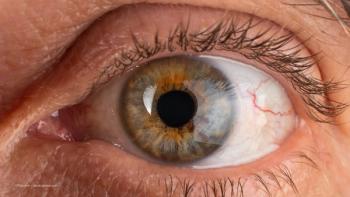
- December digital edition 2020
- Volume 12
- Issue 12
Can AI rescue physicians from EHR woes?
The next frontier of software to reduce physicians’ documentation burdens
Most of us who work in health care are intimately familiar with the unintended consequences electronic health record (EHR) systems have had on our nation’s physicians, with many feeling they have been turned into administrative clerks who now spend more time entering data to a computer than seeing patients. This is perhaps one of the most distressing case studies of technology being a double-edged sword, helping serve the interests of some—in this instance, mostly insurers and government agencies—while creating a tremendous burden for others, specifically the physicians required to use these systems.
The question is, can artificial intelligence, itself a technology, play defense to the offense of EHRs?
Do we fear artificial intelligence or do we just not understand it?
Artificial intelligence, or AI, conjures up notions of robots made to look like humans who are programmed to do our work better and faster than we can do it ourselves. AI is often associated with terms like “futuristic” and “unproven,” but the fact is, AI is all around us.
It’s used widely by Internet search engines to provide the most relevant results. Its lives inside voice assistants like Siri and Alexa, which are programmed to learn our habits and deliver an increasingly improved and more personalized experience, much like friends who get to know us better with the passage of time.
In health care, AI is already being used with great success in clinical areas like radiology for detecting abnormalities, oncology for predicting the best treatment protocols, and pharmacy for medication management. It’s also being used in administrative areas like hospital operations for capacity planning and the finance office for revenue cycle optimization, and the list goes on.
One of the newer applications of AI is for clinical documentation to help overcome the time-intensive nature of charting and to free physicians from computers, EHR, and the associated data entry.
It’s been too long, and it’s just getting worse.
Most physicians lament that it has now been 10 to 15 years since they adopted their first EHR (even longer for some), and their frustrations with these systems have only been compounded as the pressure mounts to do more with less. Burnout is rampant, and it’s just getting worse. How many surveys on physician burnout have been published in the last 2 to 3 months alone? I’ve read at least 6, all of which point to this topic as a primary contributor.
Even the stresses of COVID-19 have not surpassed the documentation burden and click-heavy nature of EHR systems as the foremost reason physicians are miserable. I found it eye opening to read that a recent survey by The Physicians Foundation found that 37 percent of physicians would like to retire in the next year.1 Of course, this would break the entire U.S. healthcare system. This simply cannot happen.
We cannot ignore this issue or wish it away.
Sure, it may be easy to look at physicians as a whole and latch onto stereotypical responses like, “They’re trained to tough it out, they can easily rise to the occasion and cope with the difficulties,” or even more crudely, “Oh, but they make so much money, this is a small price to pay.”
Wrong! What’s happening impedes the very fabric of how health care is delivered and received. The physician/patient relationship is eroding, and there are numerous other downstream impacts.
Have you received health care lately? It’s not the same as it used to be.
The healthcare visit of today is not the healthcare visit of yesteryear. Patients are sharing physicians’ time and attention with administrative busy work and computer data entry. Physicians often appear disengaged and hurried. And the unfortunate reality is, they often are. But they don’t want to be or mean to be. There are only so many hours in the day, and they have to keep up with overwhelming demands. Most spend 1 to 3 hours a night completing their documentation, robbing them of time with loved ones and depleting them of needed rest and the opportunity to recharge. It’s unsustainable.
How can physicians offload the documentation burden?
Many physicians have turned to scribes to offload some of the documentation burden, and this indeed provides a reprieve from the EHR. However, hiring additional labor is a costly proposition with its own set of challenges. It’s well known that scribes have very high turnover rates, typically because they’re students who leave for medical school or are otherwise unable or unwilling to stay long-term. This translates to a constant cycle of recruitment, onboarding, and training. And because it takes time for scribes to adapt to individual physicians’ preferences and methods, they can become disruptive to workflows and productivity.
Speech recognition software can be a helpful aid to physicians, but it is not capable of solving this bigger problem. Speech recognition software has certainly evolved over the past 20 years in terms of its ability to capture physicians’ verbatim dictation regardless of their communication style or any type of accent they may have. Speech recognition software that is specifically designed for the medical field has become especially adept at understanding the terminology and shorthand of most every area of specialty. However, it is not a panacea. Physicians who use speech recognition software must still spend a considerable amount of time on documentation—they remain tethered to a computer, mouse, and keyboard, navigating through EHR screens, tabs, form fields, pick lists, radio buttons, and the like.
Is artificial intelligence a viable solution to the EHR dilemma?
Some might think it’s a fool’s errand to cure the downfalls of one technology with another technology, but in the case of EHRs, AI is proving to be a very reliable and successful companion, especially when addressing physician charting. In fact, “conversational AI” is already able to listen to the dialogue that occurs between a physician and a patient, extract and interpret salient content, and turn that into a comprehensive, high-quality clinical note.
You can think of it as an advanced form of Siri or Alexa. Whereas these types of voice assistants are helpful in our everyday lives and can handle tasks ranging from playing music to finding recipes, they are predicated on responding to one very brief and simply-stated question or command at a time. Their underlying algorithms aren’t designed to listen to conversational dialogue and extract meaning. However, voice assistants rooted in “conversational AI” and designed specifically for the healthcare market are already helping automate much of the complex clinical documentation physicians face in their day-to-day work routines.
The benefits are immediate. The time physicians spend charting is dramatically reduced and no longer does it carry over into the night. They can leave the office after their last appointment with everything complete. Work/life balance is restored along with a renewed spirit for the practice of medicine.
It’s a win-win for physicians and patients alike.
Of course, the real winners here aren’t just physicians. Patients experience care very differently when they are not competing with EHRs for physicians’ attention. Patients form connected, trusting relationships with physicians based on interactions free of computer data entry and administrative busy work. Gone is the anxiety both parties feel from having no control over their circumstance. What’s old becomes new again.
Reference
1. The Physician’s Foundation. 2020 Survey of America’s Physicians: COVID-19 Impact Edition. Available at: https://physiciansfoundation.org/wp-content/uploads/2020/09/2020-Physicians-Foundation-Survey-Part2.pdf. Accessed 11/2/20.
Articles in this issue
almost 5 years ago
New ways to keep dry eye patients comfortable in contact lensesalmost 5 years ago
ODs look back on 2020almost 5 years ago
Cataract surgery 2020 updatealmost 5 years ago
Long-term follow-up of angiod streaksalmost 5 years ago
How to handle dry eye follow-up visitsalmost 5 years ago
Quiz: Know the ocular effects of eyelash growth serumsalmost 5 years ago
Know the ocular effects of eyelash growth serumsalmost 5 years ago
Quiz answers: Know the ocular effects of eyelash growth serumsalmost 5 years ago
How to manage orbital fracturesalmost 5 years ago
Navigate postop IOP control with wound burpingNewsletter
Want more insights like this? Subscribe to Optometry Times and get clinical pearls and practice tips delivered straight to your inbox.


















































.png)


